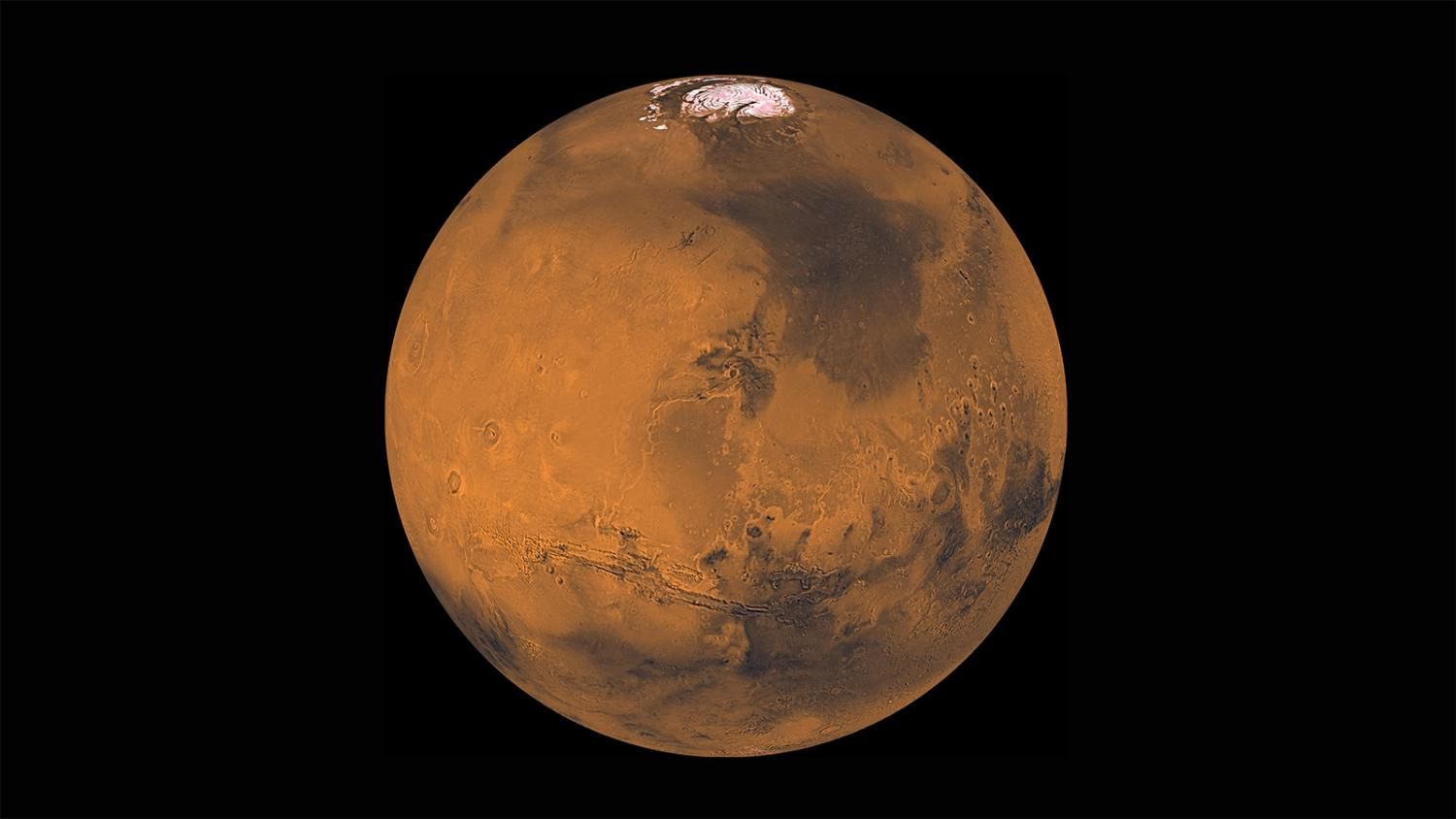A Large Asteroid Impact Might Explain Mars’ Geological Nuttiness
Computer models suggest it was big enough to form the planet’s two moons.

Mars is close, so sometimes it can seem almost familiar, but it’s important not to forget that it is a profoundly strange place. It has two oblong moons made up of an unusual combination of materials, its northern hemisphere is smoother and younger than its southern half, and its mantle contains some rare elements not normally found in planets. New research offers a possible explanation: Mars is so geologically weird because was struck by a massive asteroid over four billion years ago.
Stephen Mojzsis, a geologist at University of Colorado, Boulder, and Ramon Brasser, an astronomer at the Tokyo Institute of Technology, analyzed Martian meteorite samples and computer models, and found that only an asteroid at least 745 miles across (Texas-sized, roughly) could explain the planet’s distinctive features. An asteroid that large could deposit the rare elements, including platinum, osmium, and iridium, that are found in the planet’s mantle in sufficient quantities. It would also be large enough to significantly alter the landscape of the northern hemisphere and create a ring of debris around the planet. That debris, a mixture of Mars and asteroid material, would then have coalesced to form Phobos and Deimos, the two moons.

A massive impact on Mars is not a new idea. The concept was first proposed 30 years ago, and is known as the single impact hypothesis. But there are competing explanations for the difference between the planet’s hemispheres, including plate tectonics, erosion, and oceans. Computer modeling and studies such as Mojzsis and Brasser’s are making the single impact hypothesis a more popular option.

















Follow us on Twitter to get the latest on the world's hidden wonders.
Like us on Facebook to get the latest on the world's hidden wonders.
Follow us on Twitter Like us on Facebook